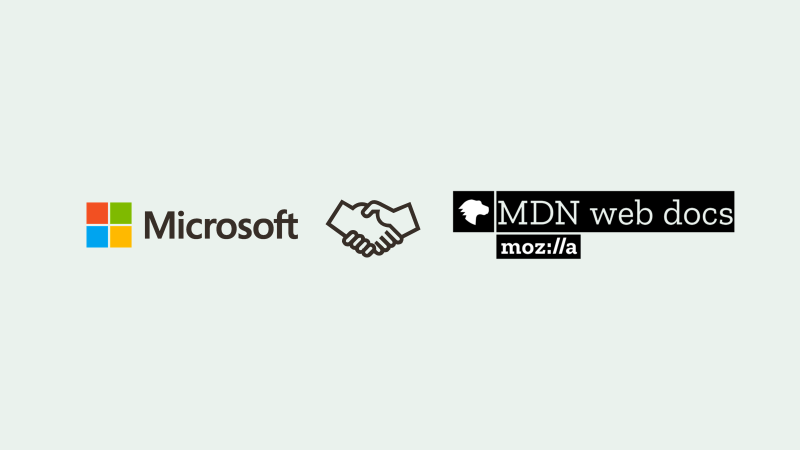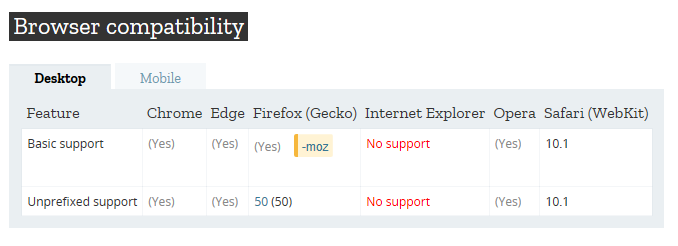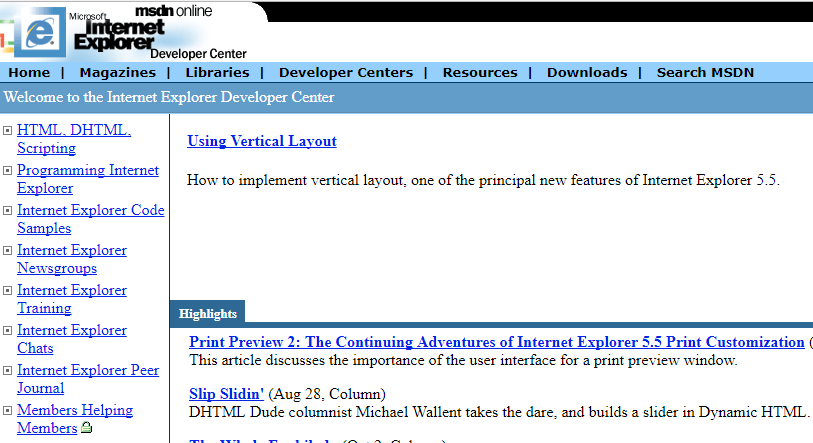Documenting the Web together
In conjunction with similar commitments from Mozilla, Google, the W3C, and Samsung, we’re teaming up to make MDN Web Docs the best place for web developers to learn and share information about building for the open web.

MDN is a core part of Mozilla’s overarching mission: to ensure the Internet is a global public resource, open and accessible to all. We believe providing web developers the best possible information will enable them to deliver great web experiences that adhere to established standards and work across platforms and devices. We are excited to have Microsoft, Google, The W3C, and Samsung on board as we continue on our journey to make MDN the premiere resource for developers.
— Ali Spivak, Head of Developer Ecosystem at Mozilla
Representatives from each of these organizations will also be serving on the MDN Product Advisory Board, a committee dedicated to making MDN your definitive place for useful, unbiased, browser-agnostic documentation for current and emerging standards-based web technologies. The MDN Product Advisory Board is also looking for active individuals from the web community to serve on the board. If you’re interested, find more details on MDN web docs.
Web docs should just work for everyone
Redirecting our API reference library to MDN is the next step towards consolidating our compatibility info in the same place you probably already frequent for general web documentation. Earlier this year, we began the effort to backfill the MDN browser Compatibility tables with a column representing the Microsoft Edge browser.
Over 5000 MDN edits later, the entire web API surface of Microsoft Edge (as of the 10/2017 Windows 10 Fall Creators Update, Build 16299) is now documented on MDN, and will continue to be kept up-to-date with each new release of Windows and our EdgeHTML browser engine.

One of our guiding principles in developing Microsoft Edge is that end users should never have to worry about which sites work in which browsers. This philosophy—”the Web should just work for everyone“—led to our choice to target the “interoperable intersection” of web APIs in our browser engineering.
Just like with end users, we think it’s well overdue for developers to have a simpler view of web standards documentation. Developers shouldn’t have to chase down API documentation across standards bodies, browser vendors, and third parties—there should be a single, canonical source which is community-maintained and supported by all major vendors.
For these reasons we’re all-in on making MDN the home of web standards documentation. Not only is MDN a veritable encyclopedia and thriving community of all things web development, it’s also an institution in itself–a living monument to our collective history—as web developers and enthusiasts, web standards advocates, and browser engineers–of developing the web forward.
Documenting the web forward
MDN was founded over 10 years ago in 2005 as the Mozilla Developer Center and later become known as the Mozilla Developer Network. Just as the Mozilla Organization was founded out of Netscape, the Mozilla Developer Center grew from the original Netscape Navigator browser docs.
Similarly, the Internet Explorer Developer Center was first published online from the Microsoft Developer Network (MSDN) several years before that in the late 90s to help introduce and showcase Dynamic HTML (“DHTML”), Microsoft’s precursor to the modern DOM and CSS object model.

Fast forward to the modern web platform of today. The competing Netscape and Internet Explorer browsers from the bygone era of the early web are now subjects of tech archaeology, not site compatibility testing. From the final releases of IE culminating with the birth of Microsoft Edge, we replaced earlier Microsoft technologies with emerging industry standards–the modern DOM and ECMAScript standards for DHTML and VBScript, HTML5 for ActiveX, a common browser extension model for Browser Helper Objects (“BHOs”).
Through all this change, MDN has grown up alongside the web, and today has over 34,500 documents, 6 million monthly users and 20,500 contributors. From its initial Netscape product docs, the breadth and depth of MDN’s content has radically expanded to encompass the state of the art of modern web development—so much so that recently the site was restructured and rebranded to reflect MDN’s commitment to being a browser-neutral community resource. We are excited to join Mozilla, Google, The W3C, and Samsung in making MDN our home for web standards documentation and dedicated to helping it grow even further to meet your needs.
We will continue to maintain Microsoft- and Windows-focused documentation on Microsoft Docs (docs.microsoft.com/microsoft-edge), including Windows-specific test guidance, information on the Edge DevTools, and upcoming details about Progressive Web Apps in the Windows Store. And you’ll still find the latest Microsoft Edge status, changelogs, and news at our Microsoft Edge Developer site (dev.microsoftedge.com).
Please join us in supporting and contributing to MDN web docs! We’re all building this Web together; let’s document our hard work!
— Erika Doyle Navara, Senior Dev Writer
